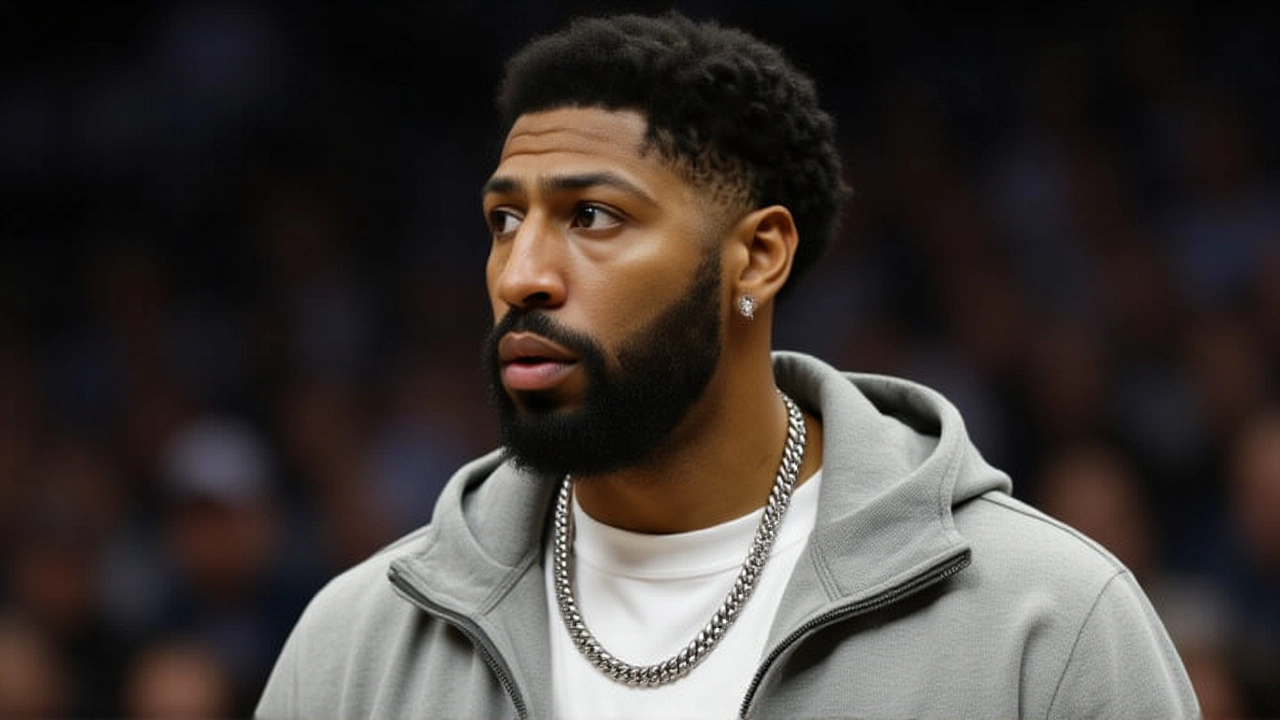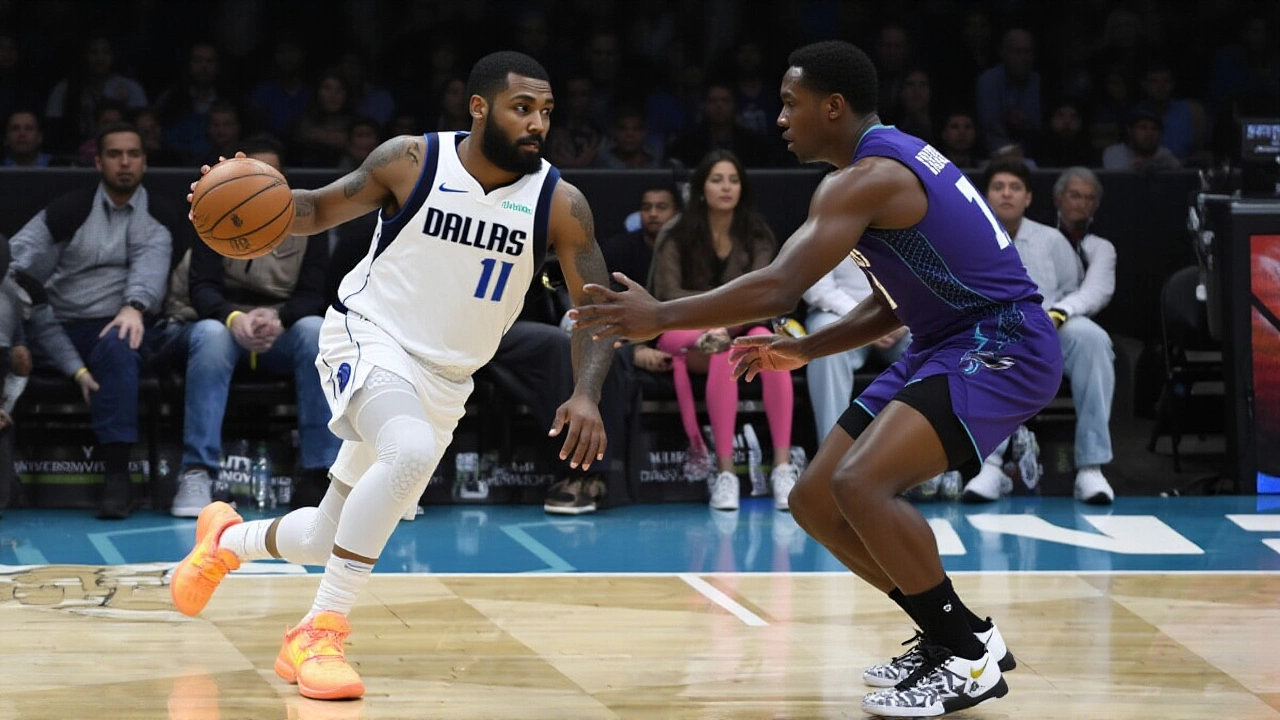
The Anthony Davis era in Dallas is on hold — again. The All-Star forward won’t return to the court for at least another seven to ten days after suffering a lingering left calf strain that’s now kept him out for nine consecutive games, including a 120-96 drubbing by the Minnesota Timberwolves on November 17, 2025. The injury, first reported as ‘lower left leg soreness’ on October 29, was later confirmed as a calf strain, and according to Sports Illustrated, it ‘does not seem to be getting any better.’ The Dallas Mavericks aren’t just missing a superstar — they’re unraveling without him.
The Medical Standoff: Dumont Overrules Harrison
What’s unusual here isn’t just the injury. It’s who’s making the call on Davis’s return. Team governor Patrick Dumont, the billionaire owner of the Mavericks, personally intervened in mid-November to block general manager Nico Harrison’s push to clear Davis for a game against the Washington Wizards. Dumont, who rarely interferes in medical decisions, insisted the team wait until Johann Bilsborough, the Mavericks’ head medical physician, gives the green light. That’s not standard protocol — it’s a power play. And it signals a deeper concern: the team fears another recurrence of Davis’s chronic lower-body issues.‘He’s 32,’ said one insider familiar with the situation. ‘We’ve seen this movie before. He comes back too soon, gets tweaked, and then we’re back to square one.’ Davis has missed 147 games over his 12-season NBA career due to lower-body injuries — including Achilles, foot, and knee issues. This calf strain? It’s not a one-off. It’s a pattern.
Coaching Frustration: ‘We’re Piecing This Thing Together’
After the November 17 loss to Minnesota, head coach Jason Kidd didn’t mince words. ‘This is just part of the season. Our health is a big problem. We have guys out for one game & then they’re in and on minute restrictions. There’s no continuity. There won’t be any continuity.’ His tone wasn’t angry — it was exhausted. The Mavericks have played four home games since November 13, losing all four. The November 16 matchup against the Portland Trail Blazers was supposed to be Davis’s return window — but he was downgraded from questionable to doubtful just hours before tip-off.The team’s roster is a patchwork. Kyrie Irving, recovering from left ACL surgery, remains out with no timeline. Dante Exum and rookie Ryan Nembhard are both sidelined with knee injuries, leaving Dallas with just one healthy point guard on most nights. Even P.J. Washington, listed as probable, is managing a shoulder strain. Only Cooper Flagg, the No. 1 overall pick, is playing through a thumb sprain — and he’s still adjusting to NBA speed.

The Domino Effect: Minutes, Morale, and the Playoffs
The absence of Davis isn’t just about scoring or rebounding. It’s about structure. When Davis is out, the Mavericks shift to a smaller, faster lineup — but they lose their defensive anchor. Opponents are attacking the rim with impunity. In their last four games without Davis, opponents are averaging 118.3 points per 100 possessions, up from 107.1 when he’s on the floor. The team’s defensive rating has dropped from 109.2 to 116.8.Meanwhile, young players like Moussa Cisse and Dereck Lively II are being forced into roles they’re not ready for. Lively, now on a strict minutes restriction, is playing 22 minutes a night — up from 14 before Davis’s injury. Cisse, a 6’10” French forward with raw talent but little NBA experience, is now logging 18 minutes per game. ‘We’re not building for the future,’ said a scout who watched the Timberwolves game. ‘We’re just surviving.’
When Will He Return? The Timeline Is Murky
The Mavericks’ medical team, led by Bilsborough, is taking a methodical approach. Davis was cleared for light court work on November 15, but hasn’t progressed to full contact drills. Mavs Moneyball’s Michael Harris reported on November 16 that Davis ‘could well be longer than’ the minimum seven days. The YouTube channel Mavericks Today estimated he won’t return before November 25 — meaning he’ll miss at least five more games, including matchups against the Phoenix Suns, Los Angeles Lakers, and Sacramento Kings.That’s a brutal stretch. The Mavericks are currently 9-12, six games behind the Western Conference’s top eight. Without Davis, their playoff chances are slipping. Even if he returns in late November, the team will need at least two weeks of chemistry-building before they can be considered serious contenders.

What This Means for the Rest of the Season
This isn’t just a Davis problem. It’s a franchise problem. The Mavericks spent the offseason banking on Davis and Irving forming a dominant frontcourt-backcourt duo. Instead, they’ve been a walking injury report. The front office’s decision to prioritize long-term health over short-term wins may pay off — if Davis stays healthy after returning. But if he re-injures himself? The 2025-26 season could collapse.For now, fans are left watching. The American Airlines Center, usually buzzing with anticipation when Davis takes the floor, has gone quiet. And the team’s future? It’s hanging on the recovery of a 32-year-old superstar who’s been through this before — and knows better than anyone how dangerous rushing back can be.
Frequently Asked Questions
How serious is Anthony Davis’s left calf strain compared to his past injuries?
Davis’s current calf strain is less severe than his 2023 Achilles tear or 2022 foot fracture, but it’s dangerously familiar. He’s missed 147 games over 12 seasons due to lower-body issues, and calf strains often precede more serious setbacks. The Mavericks’ medical staff is treating this as a potential red flag, not just a minor setback.
Why is Patrick Dumont personally involved in Davis’s return decision?
Dumont, a former executive with deep ties to sports medicine, has taken an unusually hands-on role after seeing Davis’s injury history. He overruled GM Nico Harrison’s push to return Davis earlier, fearing a recurrence. This isn’t about control — it’s about protecting a $30 million asset in a league where stars are fragile.
What’s the impact on the Mavericks’ playoff chances?
Without Davis, Dallas is 3-8 in his absence this season. Their defensive rating has plummeted, and they’re 12th in the West. To make the playoffs, they need to win at least 7 of their next 10 games — a tall task without their best player. Even if Davis returns in late November, they’ll need a 10-game winning streak to climb back into contention.
How does this affect the development of young players like Cooper Flagg and Moussa Cisse?
Flagg is playing through a thumb sprain, which has slowed his offensive rhythm. Cisse, meanwhile, is being thrown into minutes he’s not ready for — averaging 18 per game, up from 8 before Davis’s injury. While this accelerates his learning curve, it also increases his risk of injury and mental fatigue. The team’s long-term rebuild is now being forced into overdrive.
What’s the expected return date for Anthony Davis?
The earliest possible return is November 25, 2025, after the team’s next medical reassessment. But sources say a December 1 return is more likely. Davis must pass full-contact drills, then a simulated game, then a back-to-back test before clearance. The Mavericks aren’t rushing — and they’re not promising a return before December.
Are other teams taking advantage of the Mavericks’ injury crisis?
Absolutely. Teams like the Timberwolves and Suns are attacking the rim aggressively when Davis is out, knowing Dallas lacks rim protection. Opponents are shooting 58% at the rim in those games, up from 49% when Davis plays. Coaches are adjusting schemes specifically to exploit the Mavericks’ defensive gaps — and it’s working.


